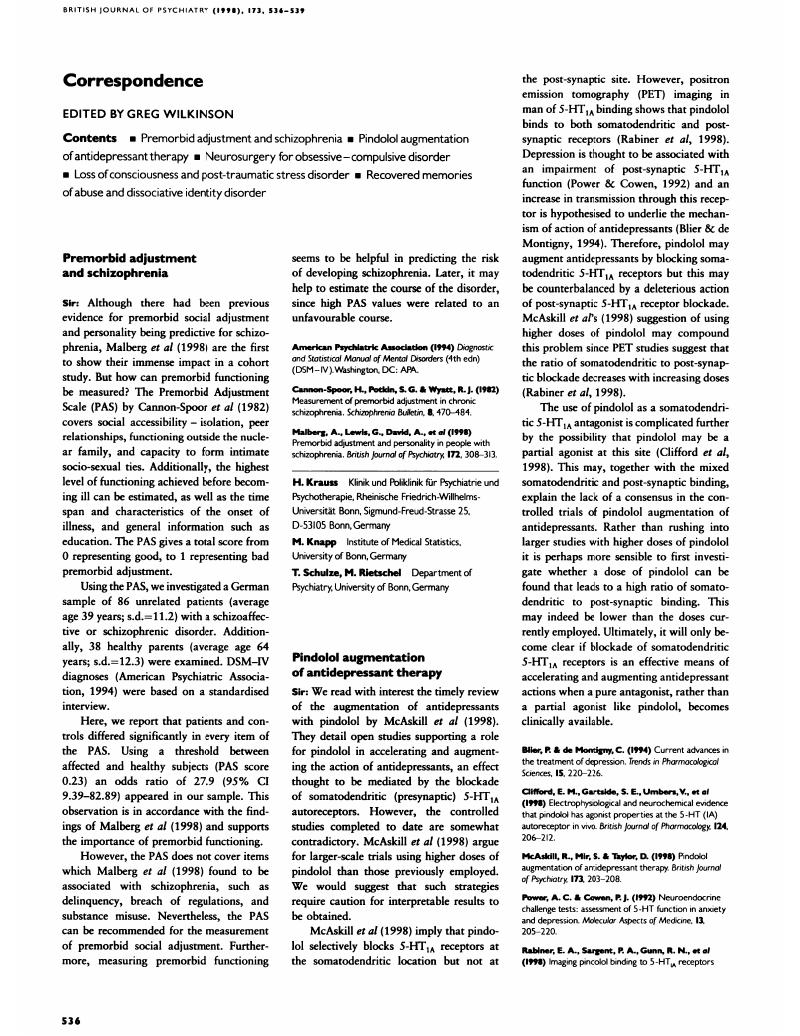Crossref Citations
This article has been cited by the following publications. This list is generated based on data provided by Crossref.
McQuade, Richard
Leitch, Mel M.
Gartside, Sarah E.
and
Young, Allan H.
2004.
Effect of chronic lithium treatment on glucocorticoid and 5-HT1A receptor messenger RNA in hippocampal and dorsal raphe nucleus regions of the rat brain.
Journal of Psychopharmacology,
Vol. 18,
Issue. 4,
p.
496.
Mcquade, Richard
Leitch, Mel M.
Gartside, Sarah E.
and
Young, Allan H.
2004.
Effect of chronic lithium treatment on glucocorticoid and 5-HT1A receptor messengerRNA in hippocampal and dorsal raphe nucleus regions of the rat brain.
Journal of Psychopharmacology,
Vol. 18,
Issue. 4,
p.
496.




eLetters
No eLetters have been published for this article.